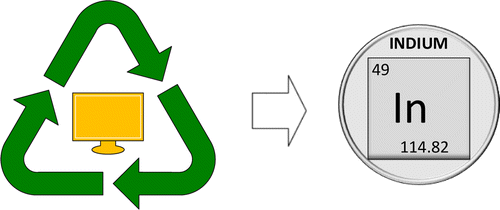Recovering a rare metal from LCDs to avoid depleting key resource

Life without bright screens on our smart phones and TVs is hard to imagine. But in 20 years, one of the essential components of the liquid-crystal displays, or LCDs, that make many of our gadgets possible could disappear. To address the potential shortage of this component—the element indium—scientists report in the journal ACS Sustainable Chemistry & Engineering a new way to recover the valuable metal so it could be recycled.
Many consumer electronics from laptops to tablets contain thin films of indium tin-oxide that act as transparent conductive coatings in the displays. Currently, the rare-earth metal is not being adequately recycled. And in China alone, experts estimate that consumers will throw out 100 million TVs, computers and laptops between 2014 and 2020. This rapid turnover explains in part why the limited global reserves of indium are in danger of running out. So Jinhui Li and colleagues set out to devise a new method to get the metal back from discarded products.
The researchers performed 18 experiments to find the optimal conditions for coaxing indium from LCDs. The most effective technique involved crushing and grinding LCD glass into particles less than 75 micrometers, or 0.003 inches, in size and bathing them in a sulfuric acid solution at 122 degrees Fahrenheit. These and other key parameters, the scientists say, could contribute to a closed-loop process of indium recovery that could allow the display industry to get indium from discarded electronics rather than using dwindling reserves.
More information: Recycling Indium from Scraped Glass of Liquid Crystal Display: Process Optimizing and Mechanism Exploring, ACS Sustainable Chem. Eng., Article ASAP. DOI: 10.1021/acssuschemeng.5b00020
Provided by American Chemical Society


















